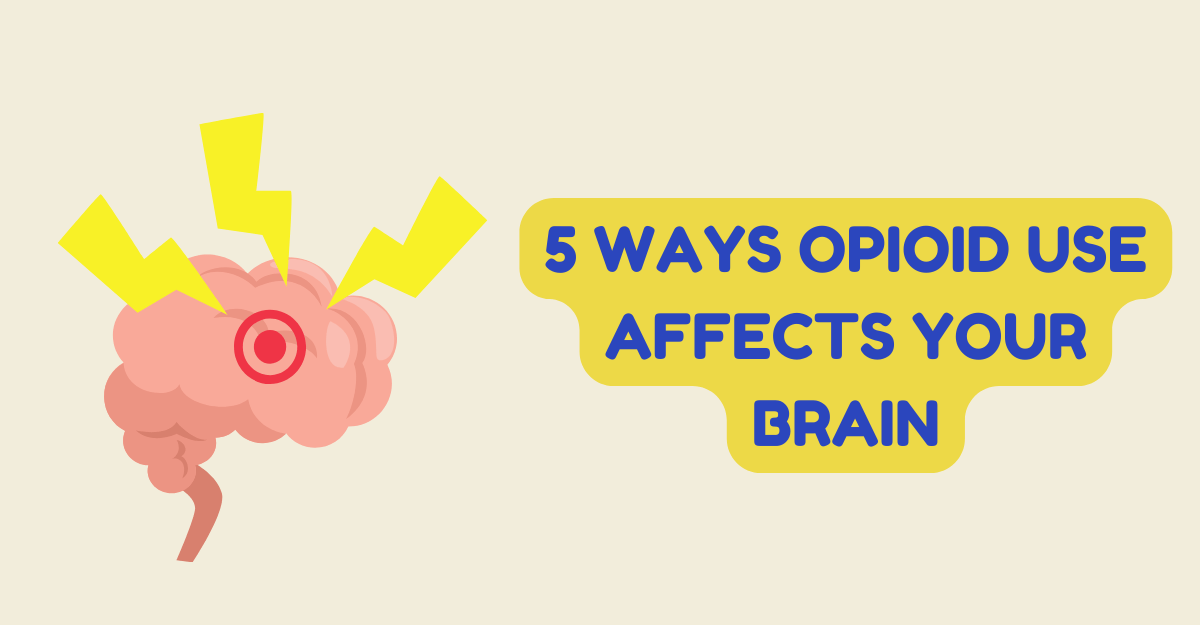
5 Ways Opioid Use Affects Your Brain
In today’s world, the opioid crisis looms as one of the most significant public health challenges, affecting millions globally. Opioids, a class of drugs including prescription painkillers and illicit substances like heroin, are notorious for their addictive nature and devastating consequences on individuals and communities. While the physical ramifications of opioid abuse are well-documented, the toll it takes on the brain is equally profound and often overlooked. Understanding how opioid use affects the brain is crucial in addressing addiction and developing effective interventions. Here are five ways opioid use impacts the intricate workings of the human brain:
Altered Neurotransmission:
At the core of opioid action lies its interaction with the brain’s neurotransmitter system, particularly the endorphin receptors. Endorphins, our body’s natural pain-relieving chemicals, regulate mood, pain perception, and pleasure. Opioids mimic the effects of endorphins by binding to their receptors in the brain, triggering a flood of dopamine—a neurotransmitter associated with pleasure and reward. This surge in dopamine creates feelings of euphoria, relaxation, and pain relief, reinforcing the desire to use opioids repeatedly. However, chronic opioid use disrupts the delicate balance of neurotransmission, leading to tolerance, dependence, and ultimately addiction. As a result, individuals may require higher doses to achieve the same effects, perpetuating a cycle of escalating use and diminishing returns.
Rewiring of Reward Pathways:
Opioid addiction hijacks the brain’s reward circuitry, reshaping behavior and priorities. The repeated activation of dopamine release in response to opioid consumption strengthens neural connections associated with drug-seeking behavior while weakening those linked to natural rewards such as food, social interactions, and hobbies. This phenomenon, known as neuroplasticity, underlies the compulsive cravings and loss of control characteristic of addiction. Over time, the brain becomes increasingly attuned to the pursuit of opioids at the expense of other life-sustaining activities, driving individuals to prioritize drug use over personal relationships, work, and self-care.
Impaired Decision-Making:
Opioid abuse exerts a detrimental impact on cognitive functions, impairing judgment, impulse control, and decision-making abilities. The prefrontal cortex, responsible for executive functions like planning, problem-solving, and self-regulation, is particularly vulnerable to the effects of prolonged opioid exposure. Studies have shown that chronic opioid users exhibit deficits in cognitive flexibility, inhibitory control, and risk assessment, making them more susceptible to engaging in high-risk behaviors and experiencing negative outcomes. These cognitive impairments not only perpetuate addiction but also hinder the individual’s ability to seek help and adhere to treatment regimens, exacerbating the cycle of substance abuse.
Emotional Dysregulation:
Opioid misuse wreaks havoc on emotional processing and regulation, contributing to mood disorders such as depression, anxiety, and irritability. Chronic opioid exposure alters the functioning of brain regions involved in emotion regulation, including the amygdala and the prefrontal cortex, leading to dysregulated mood states and heightened emotional reactivity. Individuals may experience profound mood swings, ranging from intense euphoria during drug use to profound despair during withdrawal. Moreover, the psychological distress associated with addiction often fuels a vicious cycle of self-medication, as individuals turn to opioids in a futile attempt to alleviate emotional pain and distress. Untangling the complex interplay between opioids and emotional dysregulation is essential in addressing co-occurring mental health issues and promoting long-term recovery.
Neurotoxicity and Structural Changes:
Prolonged opioid use induces neurotoxic effects and structural alterations in the brain, compromising its integrity and function. Research has shown that opioids contribute to neuronal damage, inflammation, and oxidative stress, particularly in regions implicated in reward processing and pain modulation. Furthermore, chronic opioid exposure can lead to synaptic pruning, dendritic remodeling, and alterations in white matter integrity, disrupting neural communication and connectivity. These neuroadaptive changes not only perpetuate addiction but also increase the risk of cognitive decline, memory impairment, and other neurological complications. Understanding the neurobiological consequences of opioid use underscores the urgency of early intervention and comprehensive treatment strategies to mitigate brain damage and promote neuroplasticity. It is beneficial to get treatment at this stage, and one effective strategy is medication-assisted treatment (MAT), which combines FDA-approved medications with counseling and behavioral therapies to manage withdrawal symptoms, reduce cravings, and support long-term recovery. MAT medications such as methadone, buprenorphine, and naltrexone work by targeting opioid receptors in the brain, helping individuals stabilize their lives and regain control over their addiction.
Conclusion
In conclusion, the impact of opioid use on the brain extends far beyond its immediate effects on pain relief and euphoria. From altering neurotransmission and rewiring reward pathways to impairing decision-making and emotional regulation, opioids exert a profound and multifaceted influence on the intricate workings of the human brain. Recognizing these neurobiological mechanisms is paramount in addressing addiction as a chronic brain disease and implementing evidence-based interventions to support recovery and restore brain health.






